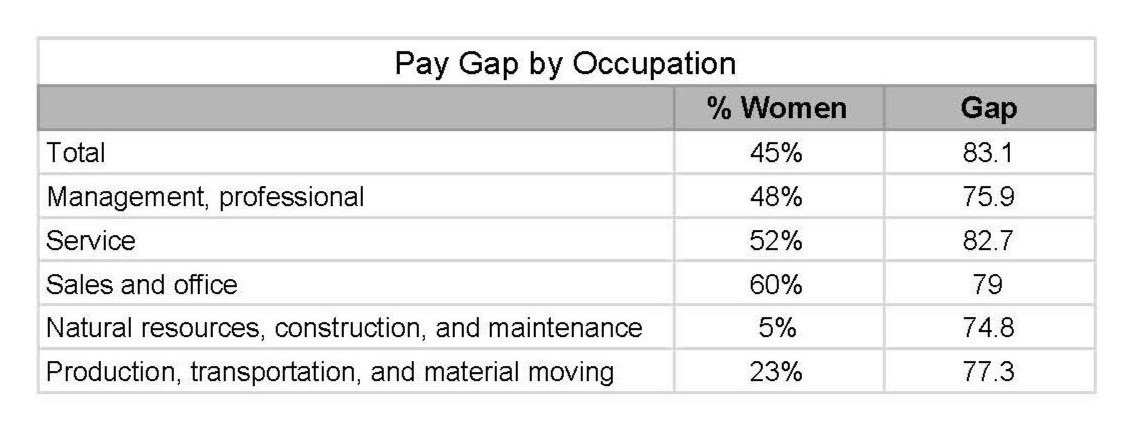The State of Gender Pay Equity, Part 4 of 4
Concluding our Gender Pay Equity series, we delve into the enigmatic phenomenon of stalled progress, dissecting the complex web of influences that have kept pay disparities from narrowing further. (Here are links to part 1, part 2 and part 3 of this series).
Pay equity has improved since the Bureau of Labor Statistics started measuring this starting in 1979, But almost all of that improvement was made before 2005. In 2004, women made about 80 cents on the dollar. So, in the past 17 years, the improvement has stagnated, with only ~3 percent improvement in almost 2 decades.
Why is this? Well, the data we have here doesn’t fully answer that question, but we can find some insights that at least partially inform the answer.
There was a major economic event around the time the plateau started: the great recession. There were fundamental economic changes coming out of the great recession: both men and women experienced high unemployment temporarily, and some left the workforce permanently. Men actually showed higher rates of permanently leaving the workforce than women, which may have something to do with this, but it’s unknown what the impact on gender pay equity really is there.
One other change that occurred was a change in the mix of occupations that grew coming out of the recession. This is likely one major contributor to the lack of progress.
BLS did some analysis on the impacts of the great recession on the economy. Before the recession in 2007, there were larger increases in service occupations and other trade-oriented occupations. After the recession, service job growth leveled out a bit, and job growth occurred significantly in managerial and professional-class jobs, as shown above.
Between 2007 and 2017, the number of jobs increased by 5%. And management, professional jobs increased 18%. This, among other things, has had a negative impact on the pay equity gap, because women in managerial and professional jobs are, on the average, even more underpaid relative to men.
Earlier in this series of articles, we saw that lower paid women experienced smaller pay equity gaps. And this new data begs us to ask the question, why do higher income professional jobs have bigger pay equity gaps?
It’s a complex answer we can’t fully explain, but when we look at some specific occupations, gender pay equity, or lack thereof, starts at the very top.
Management jobs have less pay equity overall, and even at the very top of the ladder, the C-Suite, female CEO’s only make 70 cents on the dollar compared to men. If there is structural inequality in the C-Suite, one would expect that to trickle down to lower levels of management.
There are other professional jobs where the gaps are bigger, like lawyers. And when it comes to sales roles, we see some of the biggest gaps. Whether it be retail sales or more highly skilled sales roles like insurance or securities and commodities, where the gaps are among the biggest of any of the occupations with data. It appears that for some types of careers, gender biases have been reduced, but lingering biases continue to exist in upper management.
There are some bright spots, though. Looking at more detailed specific occupations, computer and science occupations have some of the smallest pay equity gaps. Computer programmers, for instance, women make 96 cents on the dollar compared to men - the gap is almost completely gone.
College is NOT the great equalizer
Almost 60% of college students today are women. With this fact alone, you would think the gap in gender pay equity would be almost gone by now, but it is not. In fact, when looking at time series data, women with bachelor’s degrees have shown the least improvement in the pay equity gap.
Things have improved for all levels of education, but the gap has become the smallest for those with the least amount of education. A 20 point improvement, though that group has the most stagnant wages for both genders. For those with bachelor's degrees or higher, they started off the best in 1979, but have only seen a 10 point change in the gap in 40 years.
So, what should we make of all of this? On one side, the pay gap overall has come down, but on the other side, we haven’t seen any recent improvement. The inequity exists most for professional and managerial positions, despite recent pushes towards diversity, equity, and inclusivity. DEI has come a long way, but this data shows we still have a long way to go and is important for companies in all industries and of all sizes to work to eliminate these gaps. DEI initiatives for management to help identify these gaps within their organizations and worth to reduce or remove them are very necessary.
Sources:
https://www.bls.gov/opub/reports/womens-earnings/2021/home.htm
https://www.bls.gov/opub/mlr/2018/article/great-recession-great-recovery.htm






